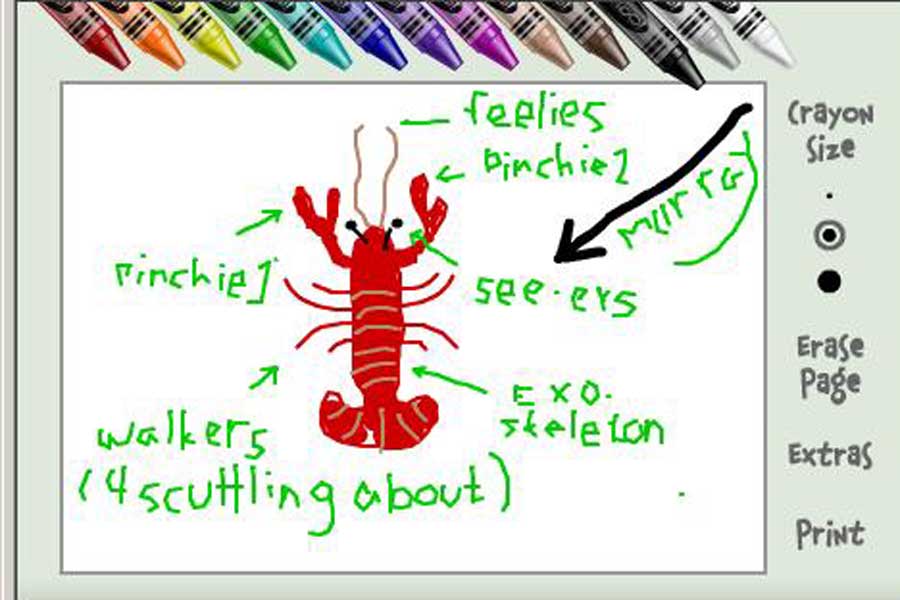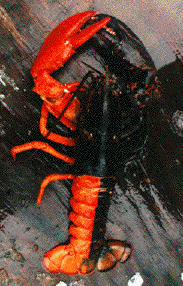|


Lobsters can regenerate legs, claws, and antennae. In fact they can amputate their own claws and legs (autotomy) to escape danger. The term 'amputate' can be in the passive sense as well. They've even been known to spontaneously drop a claw for no apparent reason.

>>>>>>>>>>>>>>>>>>>>>>>>
Yes, you are seeing one animal. One half is the usual live lobster color, the other half is orange. The odd thing about this animal is that the cephalothorax is all one [natural] color while the rest of the animal is symmetrically different. Even its mouth parts were normal-colored on the right, and orange on the left.
|  |
Lobster blood is a clear fluid. When the animal is boiled, the blood turns to an opaque whitish gel. It has no discernible flavor and is perfectly safe to eat.

Live lobsters are usually bluish green in color. On rare occasions, one is landed that is orange, yellow, or blue. The lobster's color is caused by pigments in the shell.

Lobsters exhibit 'handedness'. Some animals will have the crusher claw on the right side while others will have it on the left.

|

